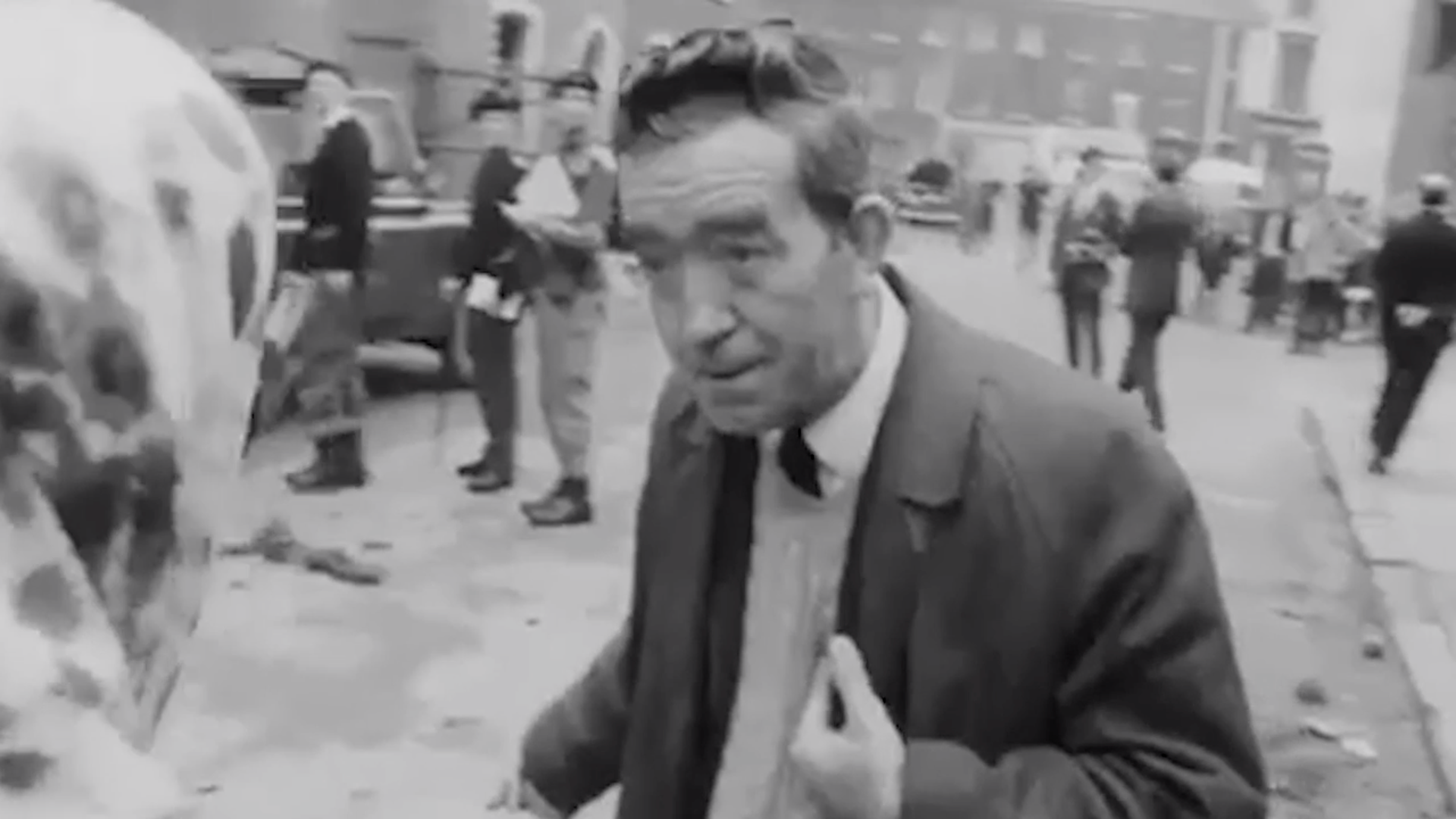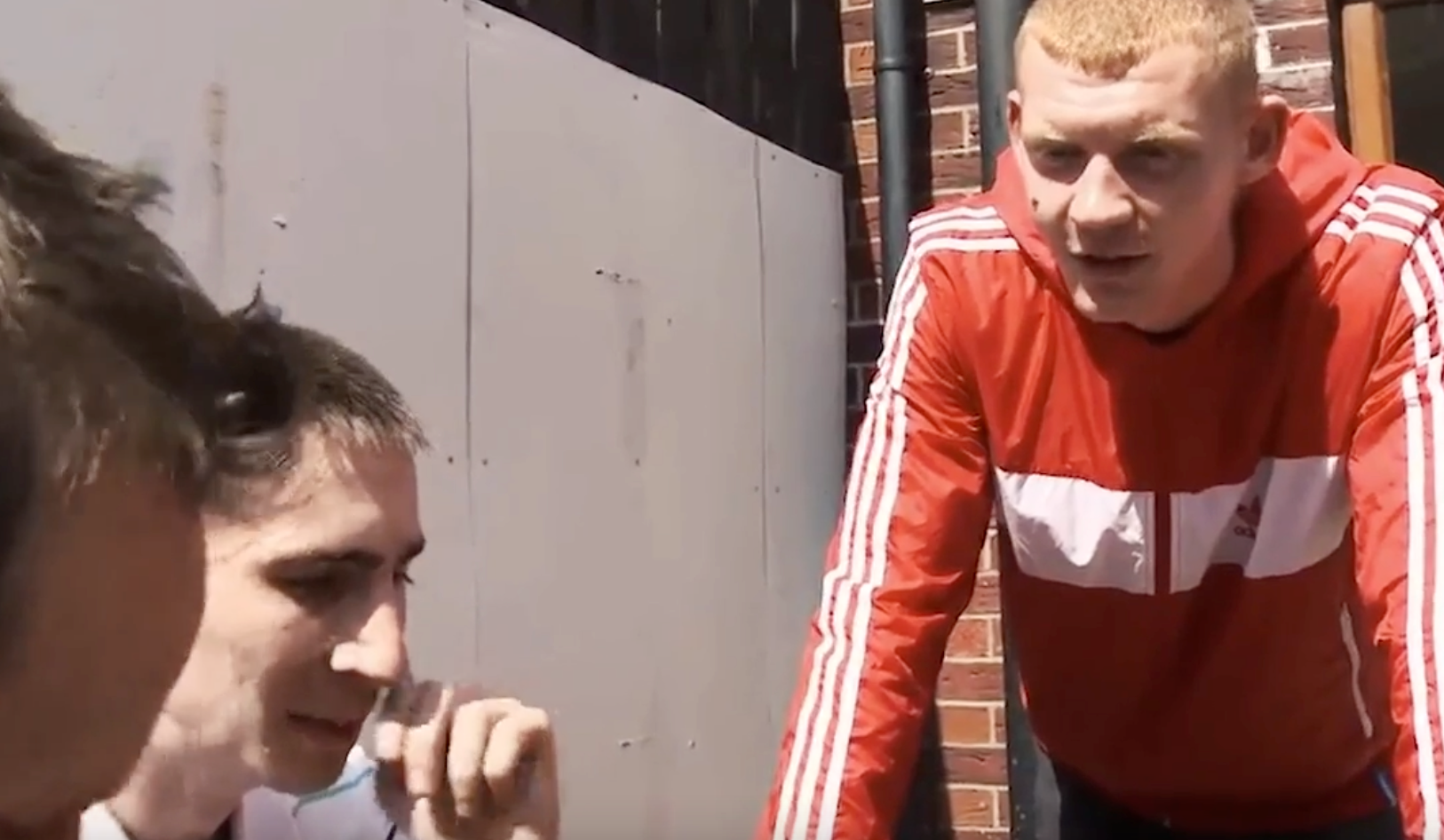twenty years is not temporary & walls are not peace
The video bellow explores the effect of decisions made in the name of peace on actual peaceful relations, specifically, how Belfast’s peace walls, a system implemented to yield peace by separating Catholic and Protestant communities has affected the city's trajectory towards the ideal of peace. The goal of depicting their creation and effects is to encourage critical thought into the creation of short term peace. This is especially relevant to Belfast as the city continues to ignore its plan to take down the peace walls by 2023.
"There is point in building defenses, if those defenses are going to be your own downfall." Bernadette Devlin 1969 Battle of the Bog-Side
There will be a ping noise whenever wall have been built. The intention of that is to show the speed and intensity by which these walls were built during each decade. The white lines correspond to the walls true mapped locations. I believe that it is important to mention that these walls do not appear on Google or Apple maps because they are, some even after 50 years of existence, considered 'temporary structures'. This video was created through the combination of found footage edited of Belfast from the 60s to present day. The intention of using these clips is to show the existence of the repetition of narrative, and to allow the viewer to draw their own associations to to the cycle, as one would if watching the events unfold in real time.
To better understand the conflict feel free to read the historical context section bellow the video.
This video was created using AdobePremierPro and AdobeAfterEffects
Context
The First Peace wall was built as a temporary solution to quell conflict and fears of conflict between the Protestant Shankill Road and the Catholic Falls Road in 1969. Made of curly barbed wire it was just meant to stop people from passing, to quell fears, it was a temporary solution, just for until the sides stopped being so hostile. Now in 2018, a 50 ft concrete wall stands between the Shankill and the Falls, it's there because people are scared, but it is still just a temporary solution though, the government says they will take the walls down when residents fear of the other side diminish.
During the nearly fifty years Belfast has been through a lot. Begging around when the first peace wall was built, there was a long, violent, social conflict euphemistically titled ‘The Troubles’. This occurrence came out of the four hundred year history of hatred being applied to a civil rights movement seeking, among other things, equal access to public housing and the end of gerrymandering for the nearly entirely protestant Stormont government had been oppressing the Catholics.
From 69’(when the first peace walls were built)-98’(when the peace agreement was signed) the streets of Belfast were the battlegrounds of paramilitary sectarian violence and hatred that strayed from the ideals of the original movement's civil rights goals to focus on the sectarian aspect.
After the signing of the Good Friday Peace Agreement in 1998, the EU and several other organizations began investing in Northern Ireland. In Belfast, the City Council decided to use that money to built more ‘Peace Walls’ between Catholic and Protestant neighborhoods to tamper down interface violence.
In 2013 the Council made a pack to take down all of the peace walls by 2023, it has been over five years but very little progress has been made.

border arguments 1969

gov builds first wall

walls 2018

sectarian hatred 2016


